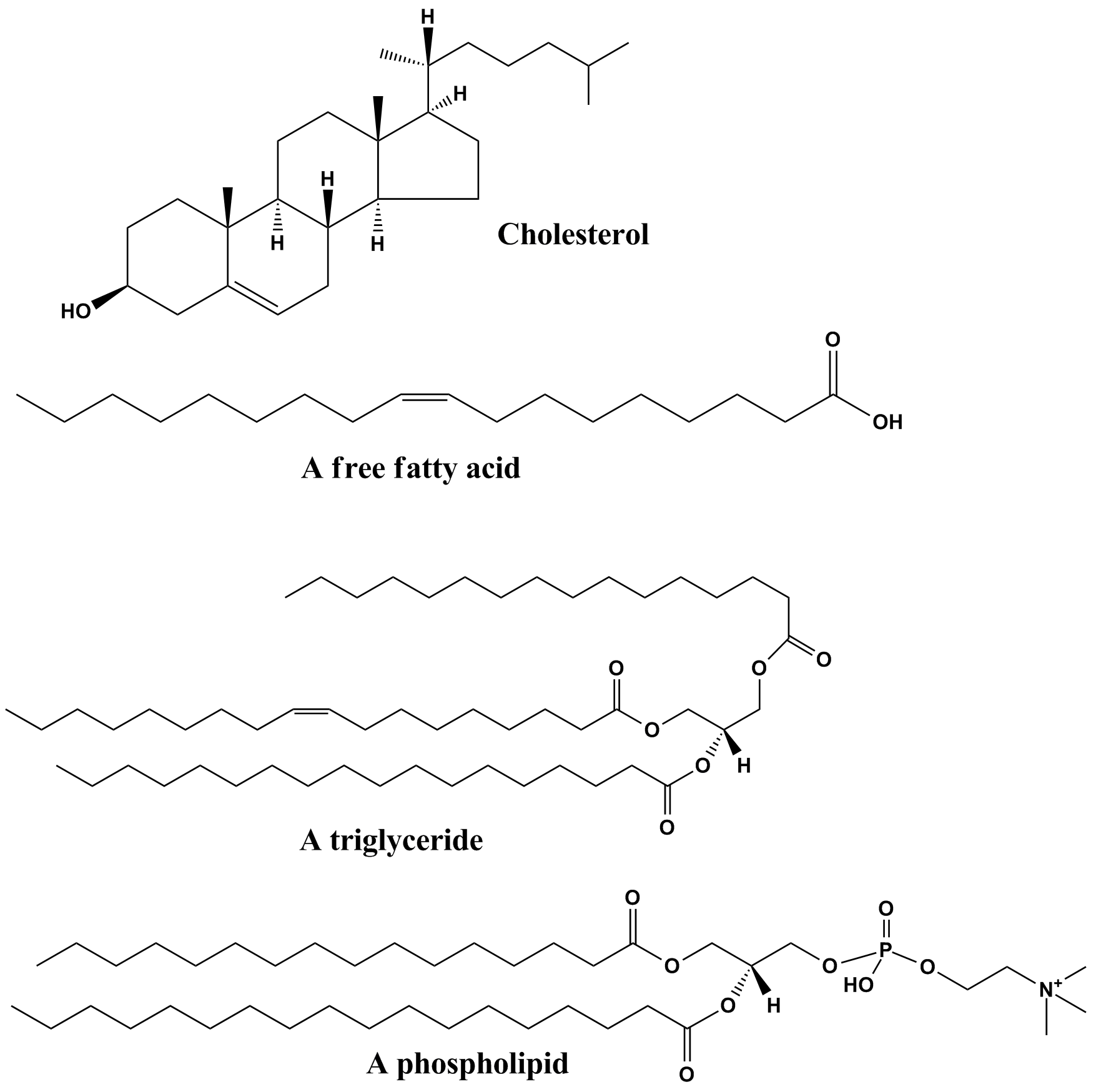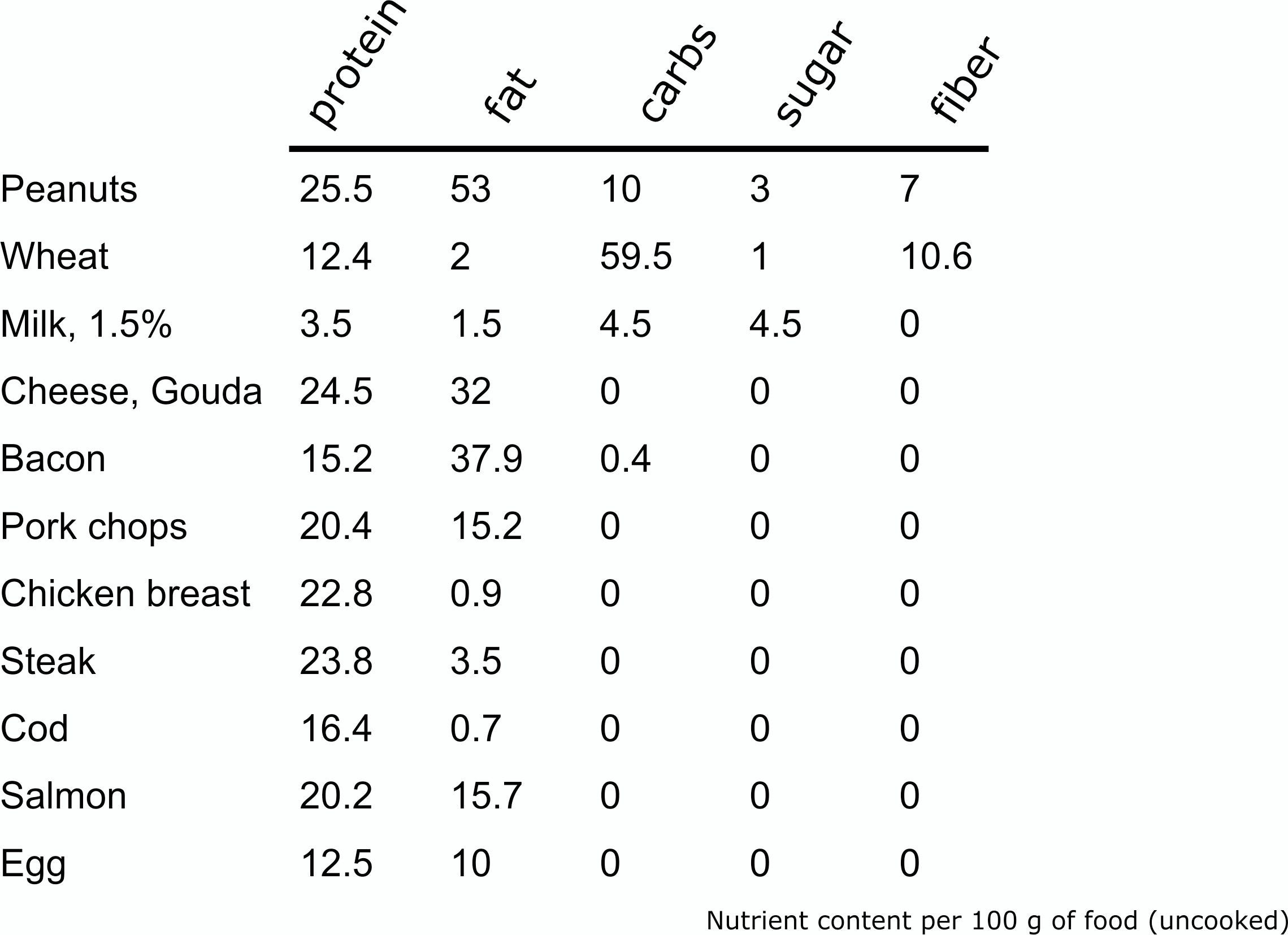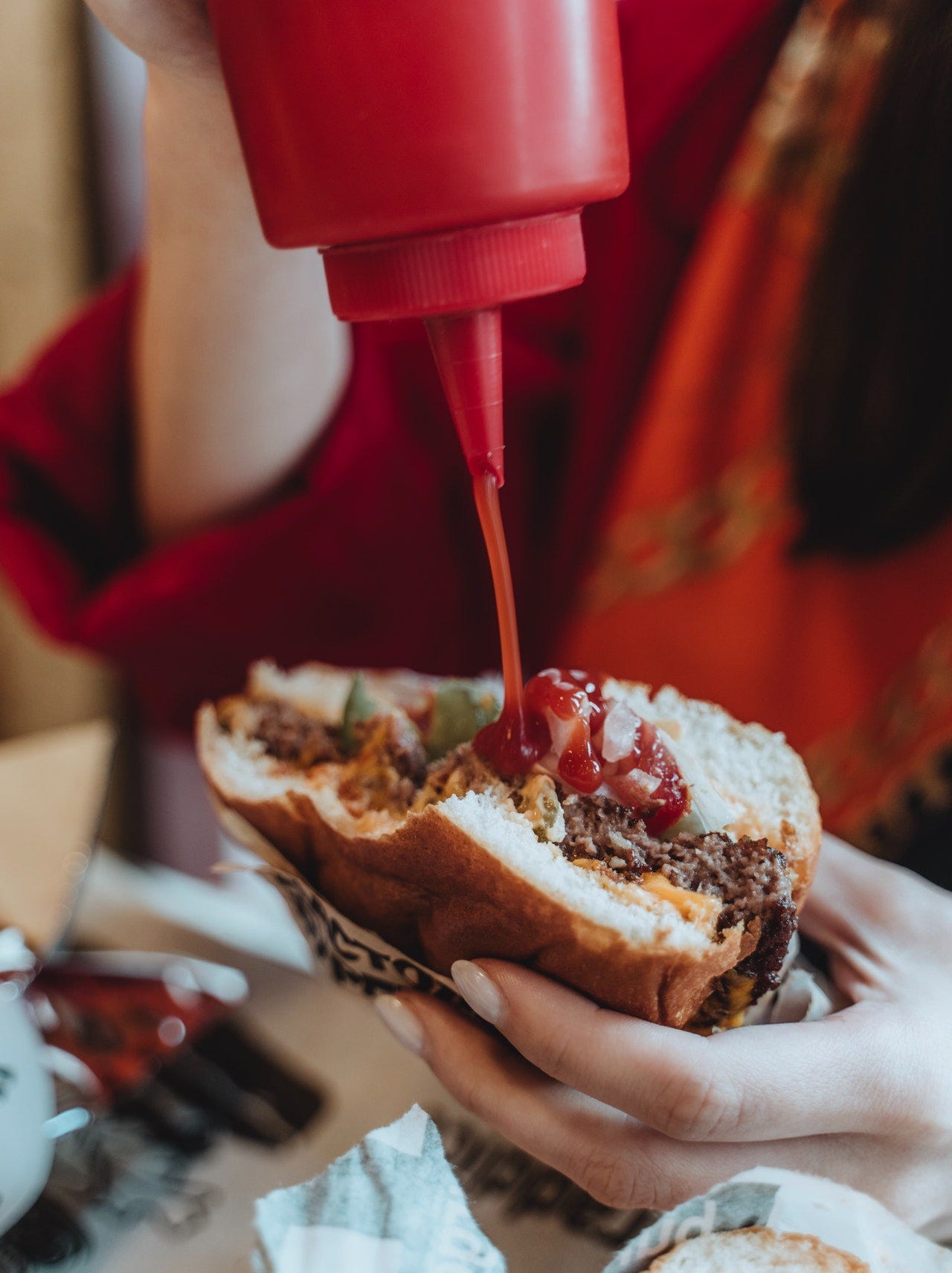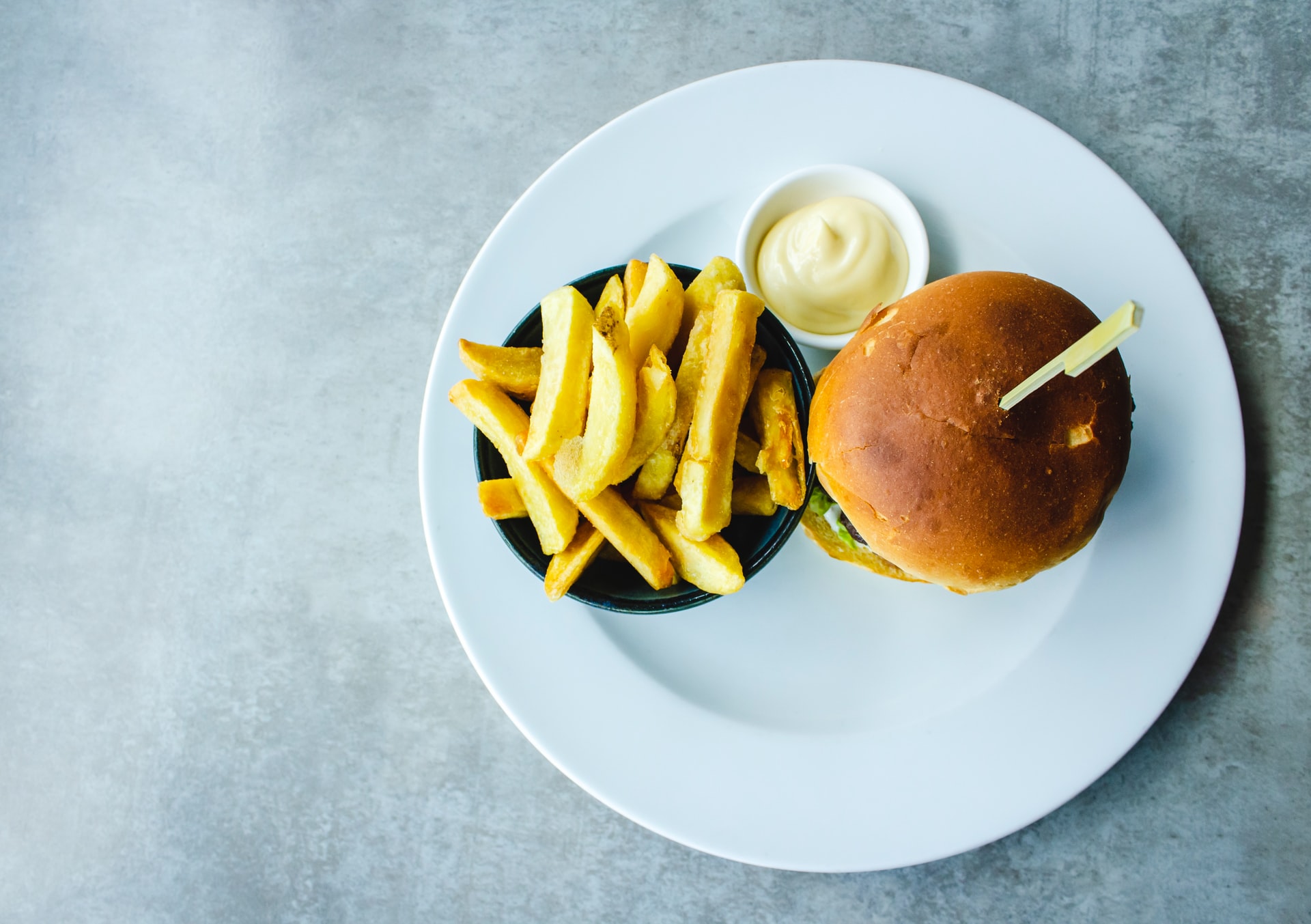Intro to Lipids

Do you know that fats/lipids are the same? Lipids are just a more fancy word. And we eat and also store fat. But what is fat really, how is it processed, and what’s the difference between saturated and unsaturated fatty acids? And why are omega-3 fatty acids called that way? You are probably curious about which foods contribute the most to your total fat intake.
Some foods are rich in saturated fatty acids, such as cheese, coconut oil, palm oil, and fatty meats. In contrast, other foods are rich in unsaturated fatty acids: most vegetable oils, avocado, nuts, fatty fish, and many other foods.
Chylomicrons are unique individual particles that transport fat throughout the bloodstream. I mentioned chylomicrons, but many other particles, called lipoproteins, carry fat in our blood; there is VLDL, LDL, and HDL.
Now besides fat in our diet, there is also fat stored in our body, the so-called bodyfat. You may not know that we frequently make and break down fat, and you may not even know that when you lose weight, the individual fat cells shrink in size.
Chemistry of Lipids

Now dietary lipids consist of triglycerides, phospholipids, and sterols. Triglycerides are quantitatively the most important. They comprise approximately 95% of our daily fat or lipid consumption and consist of three fatty acids linked via a glycerol molecule. Triglycerides are also known as triacylglycerols. It’s the same molecule.
Triglycerides are fats if they are solid at room temperature and oils if liquid at room temperature. Moreover, vegetable oils such as sunflower, olive, or peanut oil entirely consist of 100% triglycerides or fat.
What is a Fatty Acid?

Chemically, a fatty acid is a chain of hydrogenated carbon atoms connected to a Carboxyl Group. And the fatty acids that are part of the triglyceride molecule differ in three significant properties:
- First, the chain length can range from 3 to 24 carbon atoms or even more. And most of the fatty acids in our diet have 16 or 18 carbon atoms.
- The second property is the degree of unsaturation, which means the number of double bonds. Unsaturated fatty acids have at least one double bond. Mono-unsaturated fatty acids have one double bond, whereas polyunsaturated fatty acids have at least two double bonds.
- And the third property is the point of unsaturation, which describes where the double bonds are present in the fatty acid molecule.
Now in this context, it’s essential to understand the terminology of fatty acids and that there are two different nomenclature systems. There is the “n” or “omega” designation, and there is the “delta” designation. And both systems denote the carbon chain length, followed by the number of double bonds. Now concerning the position of the double bonds, the “n” or “omega” designation counts from the methylene and only indicates the part of the first double bond.
So, for instance, n-6 or omega-6 means that the first double bond starts after six carbons, counting from the methylene, and the next double bond will be positioned three carbons down. The delta designation depends on the carboxylate and indicates the position of all double bonds.
What are the Main Fatty Acids in Our Diet?

Oleic and palmitic acid is our food supply’s most abundant fatty acids. And together, they account for approximately 2/3 of our fatty acid intake. The fatty acids are often abbreviated, so,
- palmitic acid is c16:0
- stearic acid is c18:0
- oleic acid c18:1
- linoleic acid c18:2, and finally,
- there is linolenic acid, c18:3.
These are the five common fatty acids in our diet!
Lipid Content and Composition of Food
Lipid content of foods
Many foods contain substantial amounts of fat. Cooking oils such as sunflower, peanut, and olive oil are 100% fat in the form of triglycerides. Butter is about 80% fat, such as mayonnaise. Lean cuts of meat such as steak contain little fat, whereas the fat content of bacon and sausage can easily reach 40%. Fruits and vegetables generally have little to no fat.
Cholesterol is present in foods of animal origin. The highest cholesterol content is in shrimp and egg yolk. The table below gives an overview of the macronutrient composition of common foods that contribute substantially to our fat intake, including their total fat content (in grams per 100 grams of product) and cholesterol content (in milligrams per 100 grams of product).
*Please realize that the values represent averages, and that food composition may vary.

Fatty Acid composition
The fatty acid composition of a particular oil varies depending on the variety of the crop, growing conditions, etc. The values in the table below give a reasonable estimation of the fatty acid composition of the primary fats and oils used in food manufacturing and preparation.

Lard and butter are rich in saturated fatty acids, whereas vegetable oils contain mostly unsaturated fatty acids, except coconut oil (and cocoa butter, not shown). What is remarkable is that coconut oil is rich in medium-chain fatty acids of chain lengths 8 to 12. Soybean oil is unique in that it is relatively rich in linolenic acid (C18:3) compared to other common vegetable oils such as sunflower and peanut oil. Fish oil provides large quantities of fatty acids of chain lengths 20 to 22. Typical fatty acids present in fish oil are eicosapentaenoic acid (C20:5) and docosahexaenoic acid (C22:6). The oil contains very high amounts of linolenic acid (approx. 50%) is flaxseed oil (not shown in the table).
Lipid Digestion and Absorption

Before you take the dietary fat into your body, it must be digested first. So here, I will discuss fat digestion or triglyceride digestion.
Digestion of dietary fat involves the breakdown of the triglyceride molecule into two fatty acid molecules and one mono-glyceride molecule. And a mono-glyceride molecule is glycerol attached to one fatty acid. Most dietary fat digestion takes place through the activity of an enzyme called pancreatic lipase, the pancreas produces that, and the remainder of fat digestion is accounted for by an enzyme produced by the stomach called gastric lipase.
The salivary glands also produce a lipase that is called lingual lipase. It is not quantitatively crucial for fat digestion, but it’s believed to be important in oral fat detection or fat taste. And funnily, it is the same enzyme as gastric lipase!
Fat digestion relies on the presence of a set of compounds that we call bile acids, and these bile acids play an essential role in fat digestion by functioning as emulsifiers. It means that they disperse the dietary fat into smaller fat droplets and thereby help the pancreatic lipase to gain more convenient access to the fat. The liver produces bile acids from cholesterol. Then they are stored together with cholesterol and phospholipids in the gallbladder.
When dietary fat enters the small intestine, it causes the secretion of a hormone called cholecystokinin or CCK. And this hormone triggers the gallbladder to contract and release its content into the duodenum. The primary bile acid that is released is called cholic acid, and this cholic acid usually is attached to amino acids. The amino acids turn taurine or glycine to form taurocholate and glycocholate. These bile acids we call conjugated bile acids.
The fatty acids and mono-glycerides released upon digestion of dietary triglycerides from a unique structure called micelle and bile acids are essential to these micelles. And they facilitate their formation and assist with fat or fatty acid absorption. These fatty acids and the mono-glycerides that are part of the micelles are taken up by the enterocyte, by the intestinal cell. Within the enterocyte, they reconvert into triglycerides via a process called re-esterification.
These triglycerides that form in the intestinal cell are packed into specialized particles called chylomicrons. These chylomicrons carry the dietary fat throughout the body and are released into the lymphatic circulation into small lymphatic vessels called lacteals. Thus, they ultimately reach the blood circulation at the site of the subclavian vein.
As seen on:
- https://medium.com/@HamnaQasim/all-you-need-to-know-about-lipids-or-fats-fee91aebdab9
- https://interact.pk/all-you-need-to-know-about-lipids
- https://www.linkedin.com/pulse/all-you-need-know-lipids-hamna-qasim?published=t
- https://issuu.com/hamnaqasim90/docs/all_you_need_to_know_about_lipids_or_fats_.docx


The last few posts are of great quality, you’re on my everyday blog list.
You deserve it, my friend 🙂
I feel this is such a lot of vital information for me. And I am glad studying your article.
Also wanna remark on a few more things, the website taste is ideal, and the article is truly excellent 😀
Just the right process, cheers
I’m very happy to find this website. I want to thank you for your time! I appreciated every part of it, and I have you saved it as a favorite to see new information in your blog.
This website is my intake, rattling good patterns and perfect written content.
Hi there! I just want to offer you a huge thumbs up for the great info you’ve got here on this post. I am coming back to your website for more soon.
I’m excited to discover this website. I want to thank you for your time for this fantastic read!!
I liked every part of it, and I have you bookmarked to look at new things on your website.
We’re a group of volunteers starting a new scheme in our community. Your website provided us with valuable info to work on. You’ve done an impressive job, and our entire community will be grateful to you.
Hey Catherina,
Thank you so much for your response, appreciation & love. It means a lot!❤️
I wish you the very best of luck with your scheme and may you succeed in your cause. 🙂
See you again on my blog <3
Hi there,
I found your blog on Google and found it genuinely informative. Many will likely be benefited from your writing.
I will watch out for Brussels and will be grateful if you continue this in the future.
Cheers!
My dear Nidia,
Thank you so much for your response, appreciation & love. It means a lot!❤️
I’ll definitely write about Brussels, stay tuned!
See you again on my blog <3
Hi, neat post.
You’ve done wonderful writing 🙂
You are so interesting!
I do not think I’ve truly read anything like this before. So wonderful to discover another person with a few genuine thoughts on this issue.
Seriously, thanks for starting this up. This website is one of the things needed on the internet, someone with originality!
My dear, Carroll,
Thank you so much for your response, appreciation & love. It means a lot!
See you again on my site <3
Good post!
I learn something totally new and challenging on blogs I come to every day. It will always be interesting to read through articles from other writers 🙂
This is interesting. You’re a very skilled blogger.
I’ve joined your feed and look forward to seeing more of your excellent posts. Also, I’ve shared your website on my social networks!
Thank you so much, dear Gralion! <3
I’m very happy to discover this website. Thank you for the time you spent giving your readers a fantastic read!!
I liked every little bit of it and have you bookmarked to check out new things.
I’m very happy to discover this website. I want to thank you for the time you spent giving your readers a fantastic read!!
I definitely liked every little bit of it and have you bookmarked to check out new things.
Attractive part of content. I just stumbled here and really enjoyed your weblog posts. I will be subscribing to your feeds!